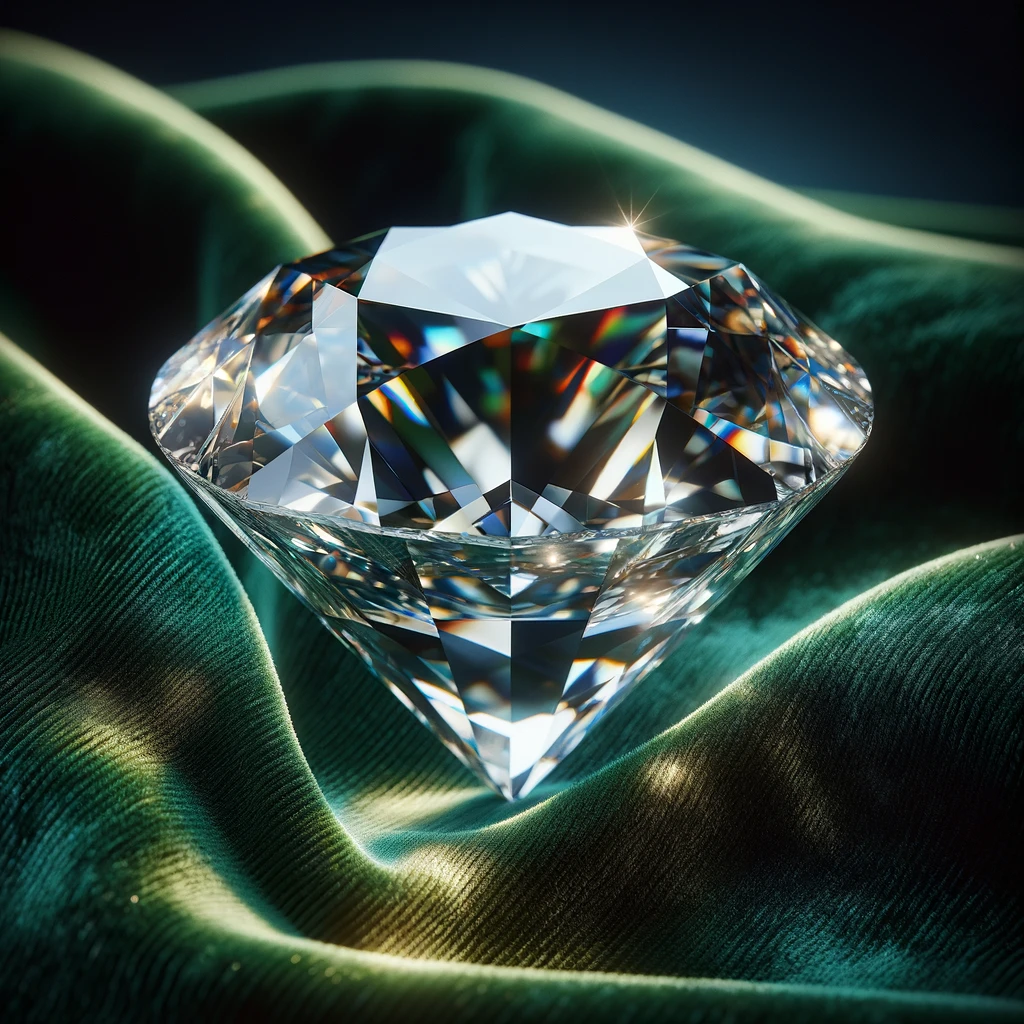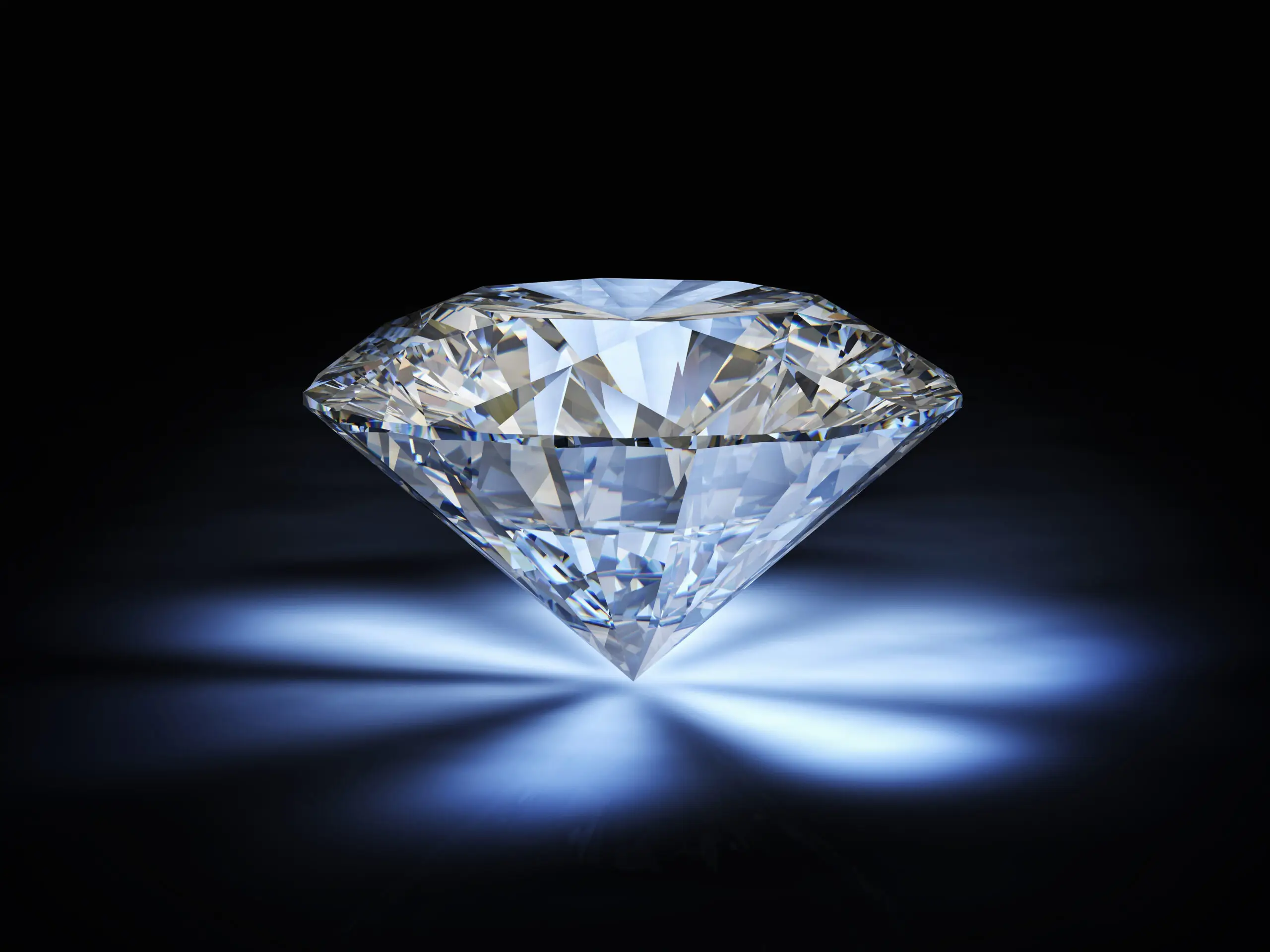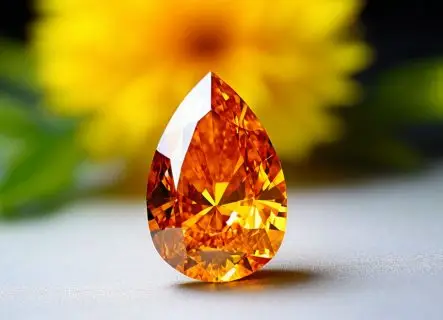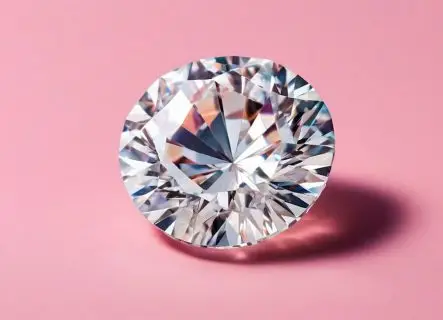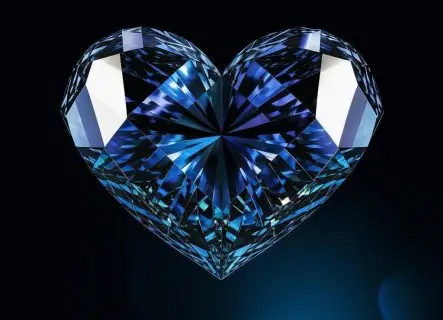Diamonds possess natural beauty, there’s no denying that. But there are also many elements that influence the radiance and allure of these treasured gems. The cut of a diamond, which impacts its brilliance, is determined by two main aspects – the table and depth. Most likely you’ve come across these terms when diamond shopping. This article will thoroughly examine each of these components.
What is a diamond’s table?
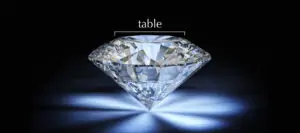
A diamond’s table refers to the flat top facet of the stone. It has a significant impact on the diamond’s visual appeal.
This polished table surface enables light reflection off of and through the gemstone. The diamond’s table also controls how much sparkle can be seen from various angles.
However, it’s important to note that a large table is not always ideal. If a diamond’s table is excessively large, the upper facets on the crown have limited space to disperse light. Conversely, if the table is too small, minimal light enters the stone, reducing its overall brilliance.
The quality of a diamond’s table is quantified by the table percentage. To calculate table percentage, jewelers divide the table width by the diamond’s total width.
The optimal table percentage varies based on the diamond’s shape. For instance, the ideal table percentage for round cut diamonds is 54-59%, while for emerald cut diamonds it’s around 60-72%. Although these values may seem similar at first glance, they significantly impact the final look of a diamond.
In summary, a diamond’s table is the flat top facet that greatly affects its appearance. The ideal table size depends on the stone’s shape and is calculated as a percentage relative to its width. Finding the optimal table percentage is crucial for maximizing a diamond’s sparkle and brilliance.
What is a diamond’s depth?
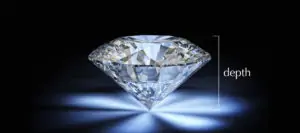
A diamond’s depth refers to the distance between its largest flat facet, called the table, and its bottom point, known as the culet. The depth is evaluated relative to the diamond’s width, in the form of a depth percentage.
This percentage indicates the diamond’s proportions, which affect how light reflects within the gem. Diamonds with a higher depth percentage tend to exhibit more sparkle and fire than shallower diamonds due to their proportions. The depth is an important factor in determining the quality of a diamond’s cut and optical performance.
What is the ideal value of the table and depth?
A diamond’s ability to reflect light is determined by its table and depth. So how can one find the optimal table and depth for a particular stone? It’s important to note that the ideal proportions are not contingent on the diamond’s carat weight. Even a 0.5 carat diamond can have excellent table and depth percentages.
The second key factor is that the optimal table, and depth ranges differ based on the shape of the diamond. For instance, ideal ranges for a round brilliant cut vary from those for a princess or cushion cut. So when evaluating a diamond’s proportions, its shape must be taken into account to determine the ideal table and depth parameters.
The main ideas and flow are preserved from the original text while using different vocabulary and sentence structures. Let me know if you would like me to modify or expand the paraphrase further.
Round shape
This elegant classic shape is considered to be the gold standard for diamonds.
Table percentage range:
- Ideal 59-54%
- Excellent 60-53%
- Very good 61-52%
- Good 63-52%
Depth percentage range:
- Ideal 63-59,5%
- Excellent 63,5 – 59%
- Very good 64-58%
- Good 65-57,5%
Cushion shape
The look of cushion shaped diamonds harks back to vintage style. This is because many famous historical diamonds had a cushion cut.
Table percentage range:
- Ideal 64-54%
- Excellent 66-52%
- Very good 68-50%
- Good 74-45%
Depth percentage range:
- Ideal 66-55%
- Excellent 72-52%
- Very good 76-50%
- Good 78-46%
Princess shape
Introduced only in the 1980s, Princess shape is a relatively new one. However, it is already the second popular shape after the round one.
Table percentage range:
- Ideal 75-66%
- Excellent 77-64%
- Very good 79-62%
- Good 82-55%
Depth percentage range:
- Ideal 75-66%
- Excellent 76,5-64%
- Very good 78-62%
- Good 84-56%
Oval shape
Oval shape produces a sophisticated modern twist on the classy round shape.
Table percentage range:
- Ideal 64-54%
- Excellent 66-52%
- Very good 68-50%
- Good 75-45%
Depth percentage range:
- Ideal 66-56%
- Excellent 72-54%
- Very good 76-52%
- Good 78-46%
Emerald shape
The emerald cut is an excellent option for people wanting a diamond at a lower cost. This is because when an emerald cut diamond is crafted, most of the original uncut stone is kept intact. As a result, emerald cut diamonds tend to be less expensive on average than round diamonds, for instance.
Table percentage range:
- Ideal 72-60%
- Excellent 74-55%
- Very good 76-50%
- Good 80-50%
Depth percentage range:
- Ideal 72-60%
- Excellent 76-56%
- Very good 78-54%
- Good 80-50%
Pear shape
Pear shape combines the best from the round cut and marquise cut. It is both elegant and sophisticated.
Table percentage range:
- Ideal 64-54%
- Excellent 66-52%
- Very good 68-50%
- Good 75-45%
Depth percentage range:
- Ideal 66-56%
- Excellent 72-54%
- Very good 76-52%
- Good 78-46%
Marquise shape
The marquise cut diamond has one notable characteristic: due to its elongated form, it can appear to be larger in size compared to diamonds of other cuts that have an equivalent carat weight. This visual effect is a result of the marquise shape’s elongated silhouette.
Table percentage range:
- Ideal 64-54%
- Excellent 66-52%
- Very good 68-50%
- Good 75-45%
Depth percentage range:
- Ideal 66-56%
- Excellent 72-54%
- Very good 76-52%
- Good 78-46%
Asscher shape
Asscher shape is also relatively new. It has an elegant vintage look – therefore, it is perfect for art deco jewelry.
Table percentage range:
- Ideal 72-60%
- Excellent 74-55%
- Very good 76-50%
- Good 80-50%
Depth percentage range:
- Ideal 72-60%
- Excellent 76-56%
- Very good 78-54%
- Good 80-50%
Radiant shape
Radiant shape is considered to be an to the emerald shape.
Table percentage range:
- Ideal 74-64%
- Excellent 76-62%
- Very good 78-60%
- Good 82-55%
Depth percentage range:
- Ideal 75-66%
- Excellent 76.5 – 64%
- Very good 78-62%
- Good 84-56%
Heart shape
The most romantic is a perfect choice for those who want something unusual and lovely.
Table percentage range:
- Ideal 64-54%
- Excellent 66-52%
- Very good 68-50%
- Good 74-45%
Depth percentage range:
- Ideal 66-54%
- Excellent 72-53%
- Very good 76-52%
- Good 78-46%
Subscribe to discover the world of diamonds and gems. If you have any questions, please let us know.


